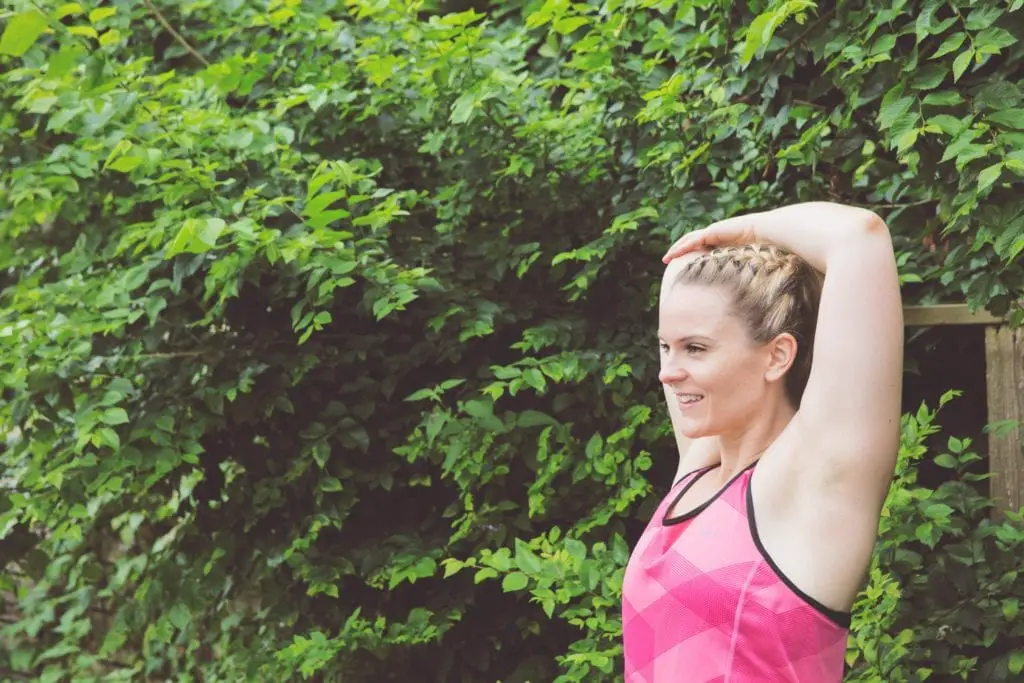
As a badminton player, I often neglected warm-ups and stretching. Really lucky that I haven’t suffered from a serious injury but the times I where I skipped warm up, I played atrociously. I couldn’t move fast enough on the court and my shots were extremely weak and inaccurate.
Don’t neglect your warm up cause not only does it prevent injuries, but it ups your game as well.
Now you’re probably wondering, how do I warm up in badminton?
Half Court Rallying
What most players and I like to start off with is half court rallying, specifically drives. When driving, make sure you bounce on the balls of your feet and make quick taps by flicking your wrist quickly and not pulling back to swing. Driving like this starts to warm up your reaction speed, legs, and wrist as well. If you can add in offensive and defensive drives which is when one of the players is closer to the net and hitting it lightly down towards the other player like a fast drop, it will help a lot as well, especially if you’re a doubles player.
After driving for a little, usually you want to move onto clears because they are the most basic overhead swing. This will allow you to fully warm up your arms but also prepare you for other types of overhead shots. Make sure you clear all the way to the back line.
Then you move onto drop shots. To make it simpler explaining how you want to do these, I’m gonna list two players as A and B. When A drops, B wants to return with a net shot, and then A lifts the shuttle. Then B drops and A returns with a net shot and then B lifts and so on. This drill helps your front and back footwork and prepares you for your next type of shot, the smash.
After you have dropped for a little, it’s time to move onto smashing. With this drill it’s the same as the drops except you replace drops with smashes. When you are doing this drill, you can add in a little hop but I recommend not doing a full jump smash because at this point you haven’t stretched yet so it is quite easy to pull muscles by trying to do your hardest smash.
Generally after smashing, finish rallying with some net shots. This is really here to just warm up how you play net shots and the quality of them. By this time you should be pretty warmed up.
Let’s talk about some general information now. If you are warming up before a match, you generally get limited to 1 minute so stretching and jogging will probably happen before you are called up. When you start rallying make sure you keep aware of this time and not take too long on one drill! If it is before training or you’re with some friends, 3 minutes is really good. When you are doing these types of drills, don’t try to kill it! You want to keep the rally going as long as possible so try not to make a shot that your partner can’t return. You have to go easy too because this type of drill is mainly here to get your badminton game warmed up so don’t overdo it! Gotta stretch and jog!
Slow Jog
When I train, I usually start with half court rallying and then jog after. When jogging, make sure you keep yourself slow and steady so you don’t have any cramps. It happens way too often with me because I like to jog fast and feels extremely uncomfortable. Luckily it goes away fast. When doing these jogs, 2 laps around a court is good for a beginner, 5 laps for intermediate, and 10 laps for advanced.
In this slow jog, there are some things you can incorporate with it. Shuffling sideways, shuffling backwards, shuffling forwards, grapevine, and skipping are all great options to include in your jogs. This is because these movements are used heavily in footwork. Just make sure you don’t overdo yourself!
Stretching
Once you have done a few laps or so. It’s a good time to stretch. There’s a reason we don’t start directly with stretches and that’s because stretching a body that hasn’t done a warm up of any sort can lead to muscle pulling when stretching so usually you want to stretch after some warm up. This applies to every sport.
When we stretch in badminton, there isn’t a specific order. Here are some stretches you should include into your warm up. First sit down and put your legs out. Then reach towards your toes and try to touch them. This is a basic stretch for your calves.
After stretching calves for 20 seconds or so, move onto your hamstring. I like to stretch this by pulling one leg up and over the other leg and then giving it a hug. The tighter the hug, the stronger the stretch. Do this for 20 seconds as well for both sides.
Then move onto your shoulders. I like to stretch this by pulling on arm to the other side. Do this for 20 seconds both sides too.
There are a lot more stretches that you can and should do but I’m going to finish this off with what I generally do last which is stretch my ankles and wrists. Put your hands together and rotate them around. At the same time put one foot up on its toes and rotate it as well. Then do it to the other side.
As I said before there’s no real order to do these stretches and it’s also extremely flexible (no pun intended) with how you stretch. It’s as long as you feel warmed up and stretched your body. There are many more stretches that I haven’t included in here that people do so feel free to comment on your favorite stretches!
Footwork
What I do for footwork is something called pointing footwork. You have 6 points on the court, two in the front, two in the middle, and two in the back all next to sidelines. Then a partner (or you can just do it yourself) points to a point and you have to play a shot after going to that point with proper footwork. Do this 5 sets of 10 as a beginner, 5 sets of 15 as intermediate, and 5 sets of 20 as advanced. By this point you should be fully warmed up and ready for your intense match or training!
Warm Up Your Game!
Once again, I want to stress the importance of warming up. There are so many benefits to warming up that it’s just unwise to not do so. Preventing injuries and upping your game are just some of them. You may also feel less sore after intense playing as well! Good luck in your badminton games and if you have any questions or comments, please leave them below!

